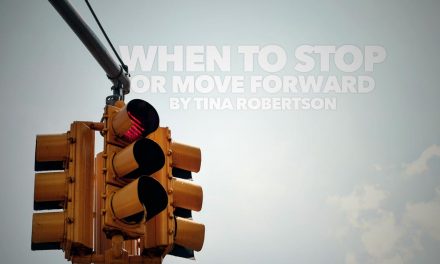When I first started homeschooling my boys I wasn’t really sure what kind of homeschoolers we were. Honestly, I really didn’t realize how many options there were to choose from. Most of the material that I looked at and the families that I spoke with were using the Classical Education method. I decided to give it a try too.
It didn’t work.
We stumbled through our first few years of learning together as I searched for what was going to work best for us. When I came across this book. It was really short and went through some of the basics of the Charlotte Mason method.
I was hooked. It was a great fit for parenting and homeschooling. So I jumped in with both feet and never looked back.
I have boys which has added an interesting dynamic into our homeschool. It’s also part of the reason that the Classical Education method didn’t work for us. My boys are full of energy! One of them struggles with focus and attention.
The Charlotte Mason method has been a sanity saver for all of us. It is a great way of teaching my boys. Here’s why:
- Short lessons
- Living books
- Narration
- Nature studies
Short lessons are great for short attention spans and young boys. My boys are able to learn at their own pace and we cover a lot of material. There are fewer tears and frustrations over a 10-15 minute lesson. Short lessons have also helped my son learn to focus better on his lessons.
Living books are key to a Charlotte Mason Education. History really came alive for us using living books. My boys found textbooks dry and boring. A living book on Abraham Lincoln held their attention for weeks. We learned so much about the former president and that important time in history.
Narration (retelling what you’ve learned) took the place of worksheets. After reading a living book I would ask my boys to narrate what they’d learned. I love listening to their retellings of history, literature and science. Even weeks after finishing a book my boys could recall many details.
Nature study quickly became a family favorite. My boys love learning about the different plants and animals we find on our walks. We have stacks of field guides and they love adding pictures to their nature journals. They have learned the name and call of a least a dozen birds in the area. I love watching them explore new things.
Why Narration Should be a Part of Your Homeschool
A key part of a Charlotte Mason education is narration. In it’s purest form it’s simply a retelling. In our homeschool we narrate daily. I read from a book (like this science one) and then ask each of my boys to tell me what they can remember.
I can’t think of a subject that narration does work for. My boys narrate for history, science, math, nature, literature and poetry.
Over the years I have learned to be creative with how we narrate:
- Oral narrations: This can be a simple retelling of what you’ve read to your children that day.
- Written narrations: This is for older students. Instead of having your child tell you what they’ve learned let them write it down. You can even let them dictate to you and then let them write it out as copywork.
- Pictures are great for little ones. They can draw a picture about what you’ve read and then tell you about their picture. I usually will write a few sentences on the back so I can remember the details.
- Reenactments: Some of my favorite narrations have been watching my boys act out what they’ve learned. I have been treated to many plays about Shakespeare and history.
There are many benefits to narration done well:
- Build attention: When you ask for a narration your children must give their full attention to whatever you are reading. You read it once and then require them to narrate. Knowing that they cannot get a do-over encourages children to really focus. Start off reading a paragraph and gradually work your way up to entire chapters.
- Eliminates the need for testing: I don’t do testing for my children. Their narrations are all I use to evaluate their progress and learning. If a child can give a good narration on a topic then they have done the work of learning it.
- Builds comprehension: Comprehension skills will grow as your child narrates more. They will start to critically think about what they are learning. You will see them make connections and give their opinions.
How to Get the Homeschool Extras Done
When I first looked into a Charlotte Mason education I was really intimidated by the amount of work and the different subjects that she required. For a long time I really wanted to include things like composer study and poetry but I wasn’t sure how. Homeschool morning time has been the answer to my problem! Our schedule now allows me to include all those extras that I felt were important but never seemed to be consistent with.
What’s Included in Our Homeschool Morning Time
There are two parts to our morning time: the daily list and the weekly loop. I had wanted to introduce a loop schedule into our homeschool day for a while but couldn’t figure out how to make it work. Loops have found a home in our morning time and are actually the key to getting all those extras done.
Every day our morning time includes: Prayer, Bible, Memory Work, Hymns and Read Alouds.
The subjects in our loop are: Poetry, Shakespeare, Music Appreciation, Artist/Composer study, Art and Handicrafts.
I often combine things like poetry with art or artist and composer study. These are all very short and go well together. My goal is to keep morning time to around 30-45 minutes.
What Our Homeschool Morning Time Looks Like
Morning Time starts during breakfast for us. This is when we do our devotions. From there we move on to prayer, hymns, and memory work. I add in something from our loop and we always have some kind of read-aloud.
Including read-alouds in our loop allows us to read a lot of books really slowly. We are spending the year reading through Pilgrim’s Progress. We are also reading fairy tales, poetry, Shakespeare, and My Book House. I love that we are getting to enjoy some great literature and that I don’t feel rushed to get through it.
Morning time allows us to start our homeschool days on the same page. We come together as a family to worship and pray before getting down to the business of learning. I have found that it creates a calmer atmosphere in the home and creates a sense of unity. My boys look forward to the books and stories and even take turns reading!





